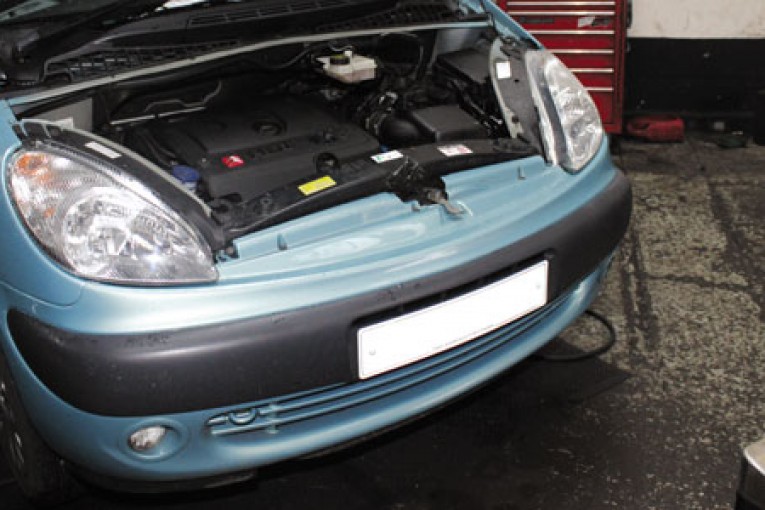
The Citroen Xsara Picasso is one of the most popular MPV vehicles on the road. With well over 230,000 vehicles in the UK. LuK, a brand of Schaeffler Automotive Aftermarket, takes a closer look at the clutch replacement on the 2.0hdi model.
If the vehicle is fitted with alloy wheels make sure the locking key is available before starting the job. We used a two-post ramp and two transmission jacks for the replacement in this example. Disconnect the battery terminal, which can be done from either the battery or the junction box under the bonnet. Remove the engine cover, disconnect the air flow sensor and remove the air filter housing from its position.

Disconnect the reverse light switch and the earth lead connection which is found on the gearbox. The excess wiring loom can be secured to the body using a bungee cable. It is possible to remove the top two bell housing bolts and three starter motor bolts.
The gearbox mount centre bolt can be slackened while the vehicle is at ground level, but do not remove it completely. Raise the vehicle and remove the engine under-tray. Support the engine and gearbox using the transmission jacks.
When supporting the engine do so from under the sump and use a wood block to protect it. Drain the gearbox oil, remove N/S front wheel, remove the N/S ball joint bolt and detach from its position.
Remove the driveshaft
Remove the N/S driveshaft from the gearbox and secure safely to the side using a bungee cable. Remove the two bolts that hold in place the gearbox back plate.
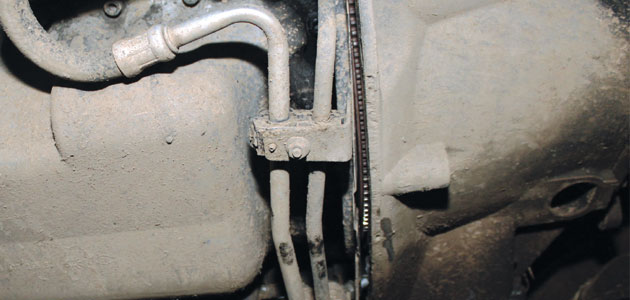
Remove the bolt holding the hydraulic pipe to the slave cylinder, as this prevents it from getting damaged when lowering the gearbox.
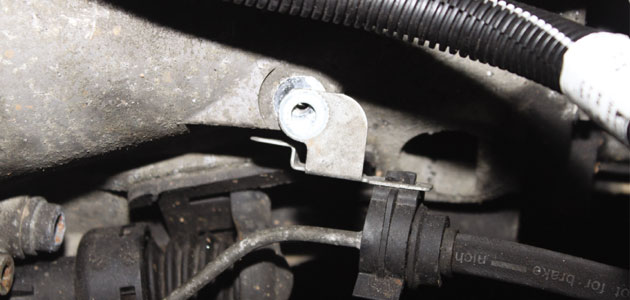
Remove the two bolts securing the slave cylinder in position.
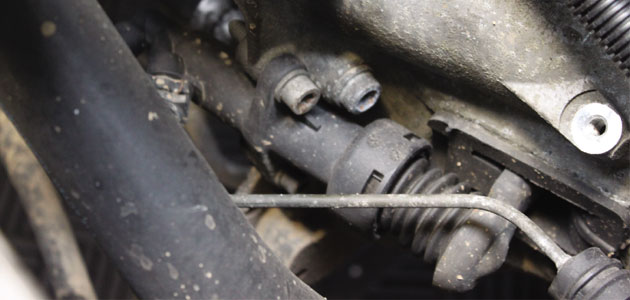
Disconnect the gear selector cables by pressing the push connector and they will pop from their position. The cables can then be removed by unclipping from the gear selector unit which can still be left bolted to the gearbox.
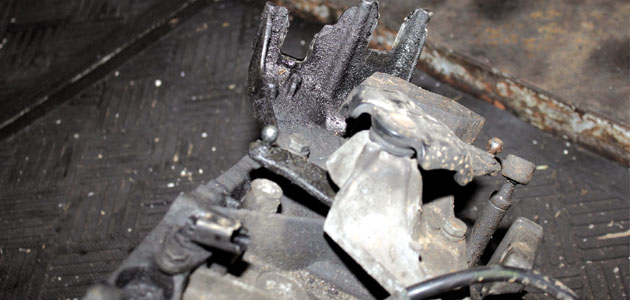
Disconnect the speedo multi-plug. Remove the gearbox mount centre bolt that was slackened earlier (Fig 6) and slowly lower the gearbox and engine so it is clear of its mounting position.
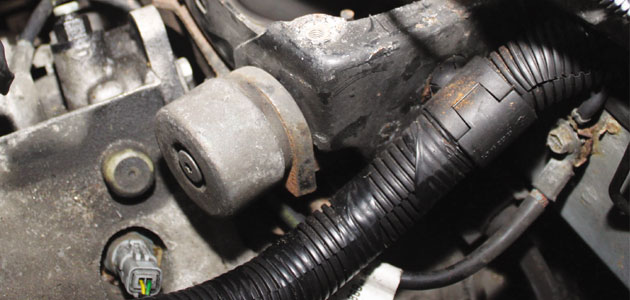
Remove the remaining bell housing bolts, pull the gearbox away from the engine and slowly lower to the floor.
Remove the clutch and release bearing. Check the bell housing for any debris and oil contamination and rectify before refitting the gearbox. The release bearing should always be changed during a clutch replacement while the release arm should be checked for smooth operation and for wear on the ball pivot. Check the flywheel for signs of heat stress, such as hair line fractures or cracks. The surface of the flywheel should also be checked to make sure it is within the manufacturer’s wear tolerance.
The clutch on this vehicle sits into a recess in the flywheel and this should also be checked and cleaned. If the surface of the flywheel is to be skimmed, make sure that the same amount is taken from the clutch bolting surface; failure to check and rectify these areas may cause the clutch to operate incorrectly.
Slide the new clutch plate
Before fitting the new clutch disc, make sure the input shaft is clean and free from any wear. Smear a little high melting point grease on the splines then slide the new clutch plate up and down the splines a couple of times, remove the plate and wipe any excess grease off.
Refitting the gearbox is the reversal of removal, remembering to refill the gearbox oil to the correct level when the gearbox is refitted.









